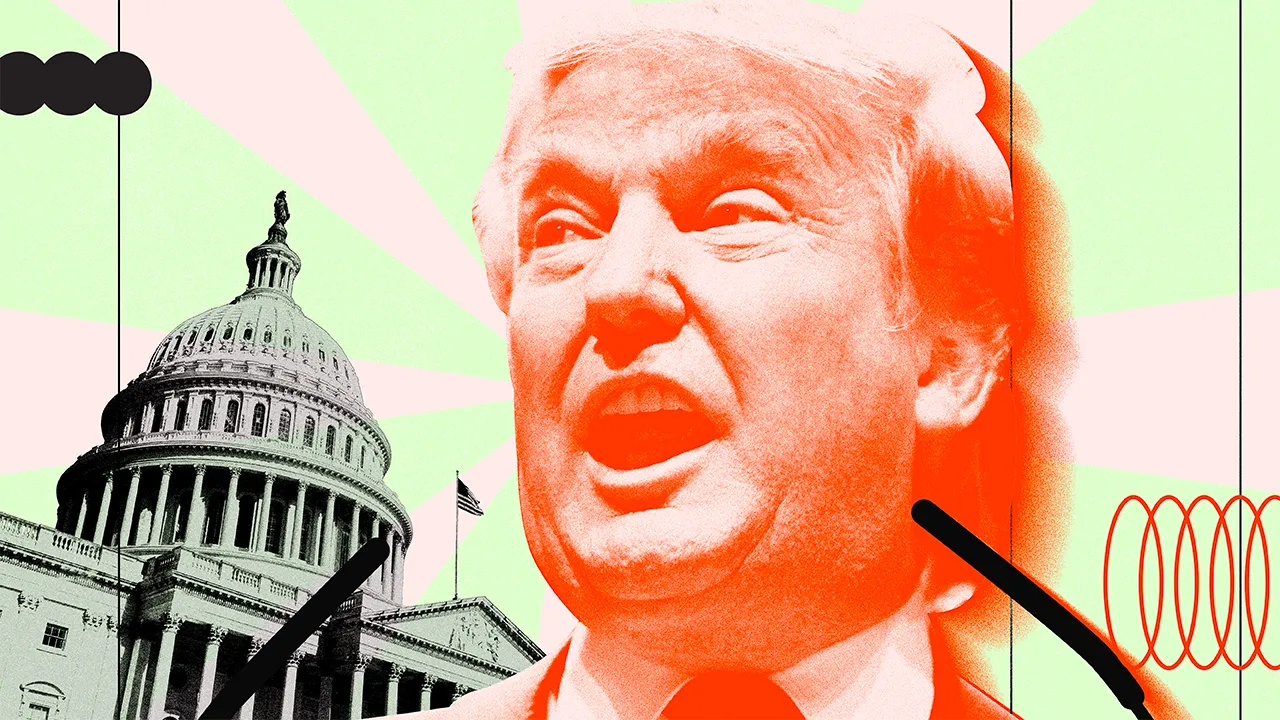Bitcoin
Donald Trump or Joe Biden for Bitcoin?

As the presidential election nears, industry leaders are closely observing how the candidates, Joe Biden and Donald Trump, may impact Bitcoin and the broader crypto market.
The stakes are heightened by their upcoming historic debate on CNN, which could significantly set the stage for what comes next.
SEC’s Regulatory Agenda
Ripple CEO Brad Garlinghouse has criticized SEC Chairman Gary Gensler’s aggressive stance on crypto regulation. He argues that Gensler’s failure to address issues like FTX and Binance undermines his credibility.
“Absolute nonsense coming from Gary Gensler today. And this slander about ‘all crypto execs going to jail’ from the man who completely missed FTX (and actually cozied up to SBF), and wasn’t even invited to the DOJ announcement about Binance,” Garlinghouse said.
Garlinghouse also criticized Gensler for misrepresenting the American people’s interests. Therefore, the SEC Chair should have have been removed from his position long ago. He went even further to suggest that Gensler’s actions could jeopardize Biden’s chances in the upcoming election.
Mark Cuban shares a similar sentiment, emphasizing that regulatory challenges in the US are stifling the crypto industry. He contrasts this with more favorable environments like Singapore and Japan.
Like Garlinghouse, Cuban believes Gensler’s actions could alienate younger voters heavily invested in crypto.
“If he has a political career in mind, he’s done, and he literally could cost Joe Biden the election because there are a whole lot of Gen Z, Gen X, millennials that own a whole lot of crypto, and by not making it easy to register, it makes it easier for all the scam coins to exist,” Cuban emphasized.
Who’s Better for Bitcoin?
Despite the sentiment that Gensler’s regulatory approach to the crypto market has generated, choosing between Trump and Biden for Bitcoin involves evaluating their policies. Trump has always been known for his enthusiastic support of Bitcoin and the blockchain space. Meanwhile, Biden’s stricter regulations ensure market stability and security, but may stifle innovation.
Niel Roarty, analyst at Stocklytics, told BeInCrypto the general consensus in the industry leans more towards Trump due to his vocal support for Bitcoin.
“The consensus among the crypto community seems to be that a Trump victory would be favorable for the industry. Aside from the vocal support he’s given, Bitcoin has tended to perform well during periods of political and economic uncertainty, and a second Trump presidency will likely see more of both,” Roarty noted.
Read more: Crypto Regulation: What Are the Benefits and Drawbacks?
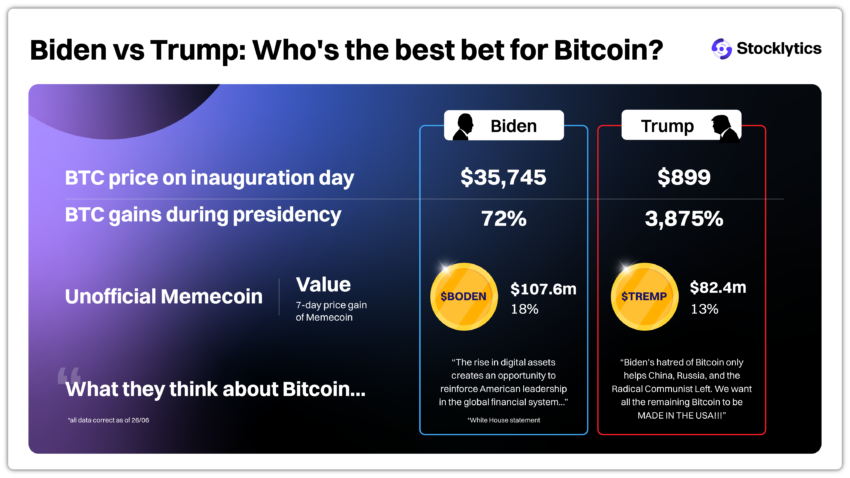
On the other hand, Max Jones, Founder of Memepad, told BeInCrypto about the influence of presidential meme coins in the election. He believes that meme coins reflect public sentiment towards political figures and demonstrate how cryptocurrency is intertwining with politics.
“Trump-based memecoins like MAGA, MAGA Hat, Doland Tremp, Super Trump, MAGA VP, and Trump Mania are leading the trend. Over the past 24 hours, these tokens have soared by over 19% each. The high posturing to Trump might take precedence in his crypto-focused campaign… President Joe Biden also has dedicated meme coin projects that are tied to him. Of the Biden-themed tokens, Jeo Boden, with a 5.1% surge to $0.1549 in 24 hours, is the most valuable,” Jones added.
As the campaign heats up, Jones believes these meme coins could act as a measure of popularity for the candidates. Their volatility is influenced by the hype surrounding the politicians they represent, but their growth also reflects broader market trends.
While it is uncertain which meme coins will endure, they currently provide an unusual gauge for Trump and Biden. Roarty maintains that the upcoming presidential debate between Biden and Trump may impact these meme coins.
“Biden does hold the edge when it comes to presidential meme coins, however, which are created and traded by crypto enthusiasts although not endorsed by the candidates themselves. The BODEN coin, modelled after the president, currently holds a market capitalization of $107 million, compared to the $82 million of TREMP,” Roarty shared.
In a related discussion, Anthony Pompliano recently talked about how stablecoins could help address the US debt crisis by providing steady demand for treasuries. This perspective ties into the broader debate on crypto policies between Biden and Trump.
Trump’s pro-Bitcoin stance suggests a favorable environment for stablecoins to aid in debt management. On the other hand, Biden’s regulatory approach and exploration of a CBDC could impact stablecoin utilization.
The upcoming presidential election could play a crucial role in shaping the future regulatory environment for cryptocurrencies in the US. Indeed, the outcome will greatly affect the industry’s growth and stability.
Disclaimer
In adherence to the Trust Project guidelines, BeInCrypto is committed to unbiased, transparent reporting. This news article aims to provide accurate, timely information. However, readers are advised to verify facts independently and consult with a professional before making any decisions based on this content. Please note that our Terms and Conditions, Privacy Policy, and Disclaimers have been updated.
Bitcoin
Strategy Adds 22,048 BTC for Nearly $2 Billion

Michael Saylor announced that Strategy purchased nearly $2 billion worth of Bitcoin. This is a massive leap over last week’s purchase, which was already quite substantial.
Nonetheless, the firm was only able to make this acquisition thanks to major stock offerings. Bitcoin’s price has been sinking over the last few weeks, and this could mature into a potential liquidation crisis.
Strategy Maintains Bitcoin Purchases
Since Strategy (formerly MicroStrategy) began acquiring Bitcoin, it’s become one of the world’s largest BTC holders. This plan has totally reoriented the company around its massive acquisitions, inspiring other firms to take up the same plan.
Today, the firm’s Chair, Michael Saylor, announced another purchase, much larger than the last few.
“Strategy has acquired 22,048 BTC for ~$1.92 billion at ~$86,969 per bitcoin and has achieved BTC Yield of 11.0% YTD 2025. As of 3/30/2025, Strategy holds 528,185 BTC acquired for ~$35.63 billion at ~$67,458 per bitcoin,” Saylor claimed via social media.
Strategy’s latest Bitcoin acquisition, worth just shy of $2 billion, is a major commitment. In February, the firm made a similar $2 billion purchase, and it was followed by a tiny $10 million buy and a $500 million one. The $500 million purchase, which took place on March 24, only happened thanks to a huge new stock offering. This move further cements Strategy’s faith in BTC.
By making these billion-dollar buys, Strategy is able to buttress the entire market’s confidence in Bitcoin. However, investors should be aware of a few potential cracks.
First of all, Bitcoin’s performance is a little subpar at the moment. Despite hitting an all-time high recently, Bitcoin is having its worst quarter since 2019, and there is not much forward momentum.
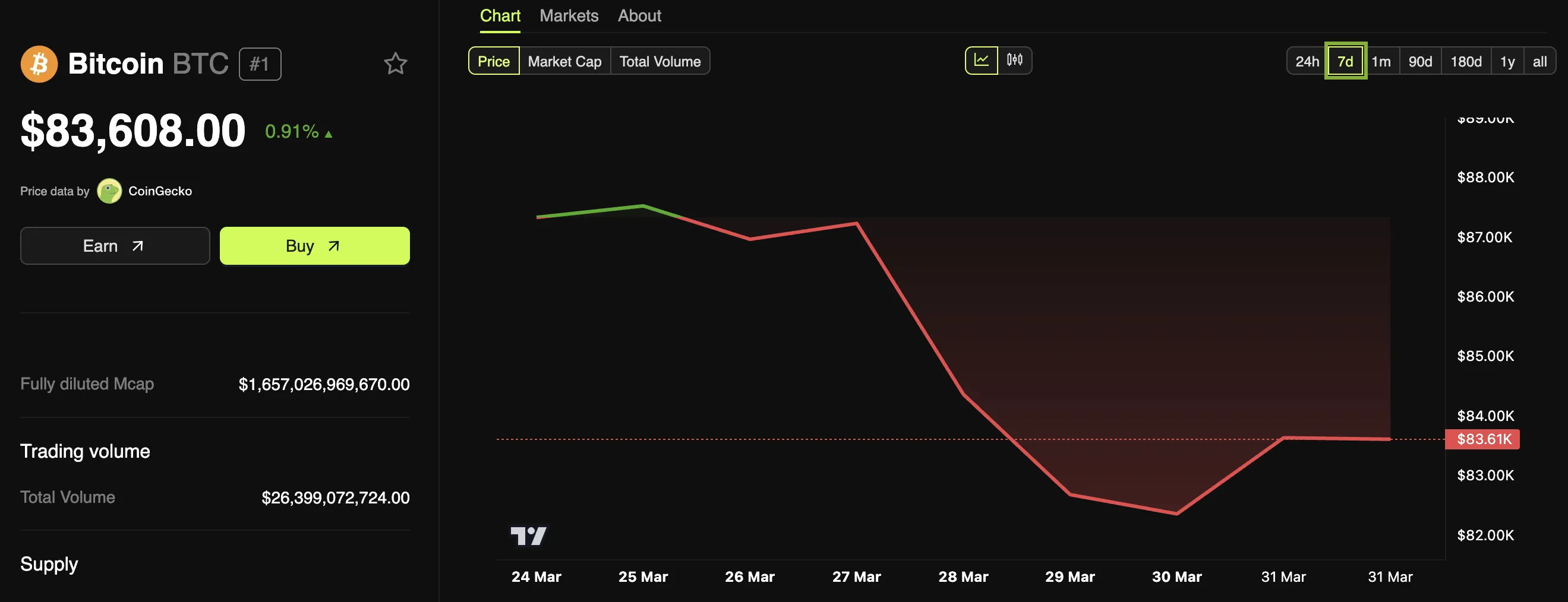
This could cause a unique problem for the company. Since Strategy is a cornerstone of market confidence, it is unable to offload its assets without jeopardizing Bitcoin’s price.
The firm’s debts are growing at a fast rate, and this could have dangerous implications if Bitcoin keeps falling. Strategy could be forced to liquidate, even if that seems unlikely now.
Still, it’s important to remember that these are only possible scenarios. Strategy has maintained its consistent Bitcoin investments for nearly five years, and it’s paid off tremendously well. However, if it keeps taking on billions in fresh debt obligations, this faith will turn into a gamble with very high stakes.
Disclaimer
In adherence to the Trust Project guidelines, BeInCrypto is committed to unbiased, transparent reporting. This news article aims to provide accurate, timely information. However, readers are advised to verify facts independently and consult with a professional before making any decisions based on this content. Please note that our Terms and Conditions, Privacy Policy, and Disclaimers have been updated.
Bitcoin
BTC Price Rebound Likely as Long-Term Holders Reenter Market

Bitcoin (BTC) is on track to end Q1 with its worst performance since 2019. Without an unexpected recovery, BTC could close the quarter with a 25% decline from its all-time high (ATH).
Some analysts have noted that experienced Bitcoin holders are shifting into an accumulation phase, signaling potential price growth in the medium term.
Signs That Veteran Investors Are Accumulating Again
According to AxelAdlerJr, March 2025 marks a transition period where veteran investors move from selling to holding and accumulating. This shift is reflected in the Value Days Destroyed (VDD) metric, which remains low.
VDD is an on-chain indicator that tracks investor behavior by measuring the number of days Bitcoin remains unmoved before being transacted.
A high VDD suggests that older Bitcoin is being moved, which may indicate selling pressure from whales or long-term holders. A low VDD suggests that most transactions involve short-term holders, who have a smaller impact on the market.

Historically, low VDD periods often precede strong price rallies. These phases suggest that investors are accumulating Bitcoin with expectations of future price increases. AxelAdlerJr concludes that this shift signals Bitcoin’s potential for medium-term growth.
“The transition of experienced players into a holding (accumulation) phase signals the potential for further BTC growth in the medium term,” AxelAdlerJr predicted.
Bitcoin’s Sell-Side Risk Ratio Hits Low
At the same time, analyst Ali highlighted another bullish indicator: Bitcoin’s sell-side risk ratio had dropped to 0.086%.
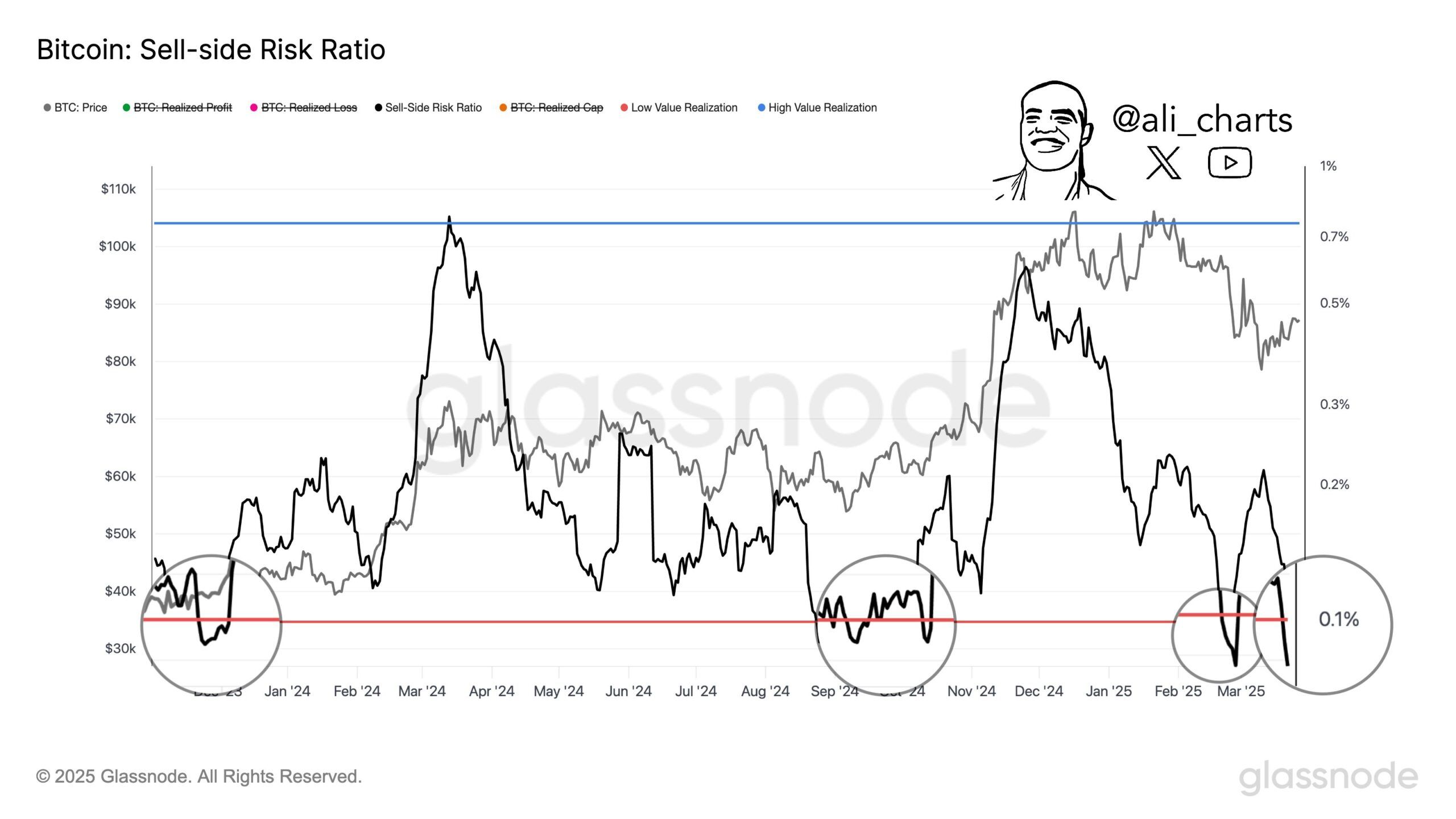
According to Ali, over the past two years, every time this ratio fell below 0.1%, Bitcoin experienced a strong price rebound. For example, in January 2024, Bitcoin surged to a then-all-time high of $73,800 after the sell-side risk ratio dipped below 0.1%.
Similarly, in September 2024, Bitcoin hit a new peak after this metric reached a low level.
The combination of veteran investors accumulating Bitcoin and a sharp decline in the sell-side risk ratio are positive signals for the market. However, a recent analysis from BeInCrypto warns of concerning technical patterns, with a death cross beginning to form.
Additionally, investors remain cautious about potential market volatility in early April. The uncertainty stems from President Trump’s upcoming announcement regarding a major retaliatory tariff.
Disclaimer
In adherence to the Trust Project guidelines, BeInCrypto is committed to unbiased, transparent reporting. This news article aims to provide accurate, timely information. However, readers are advised to verify facts independently and consult with a professional before making any decisions based on this content. Please note that our Terms and Conditions, Privacy Policy, and Disclaimers have been updated.
Bitcoin
Marathon Digital to Sell $2 Billion in Stock to Buy Bitcoin
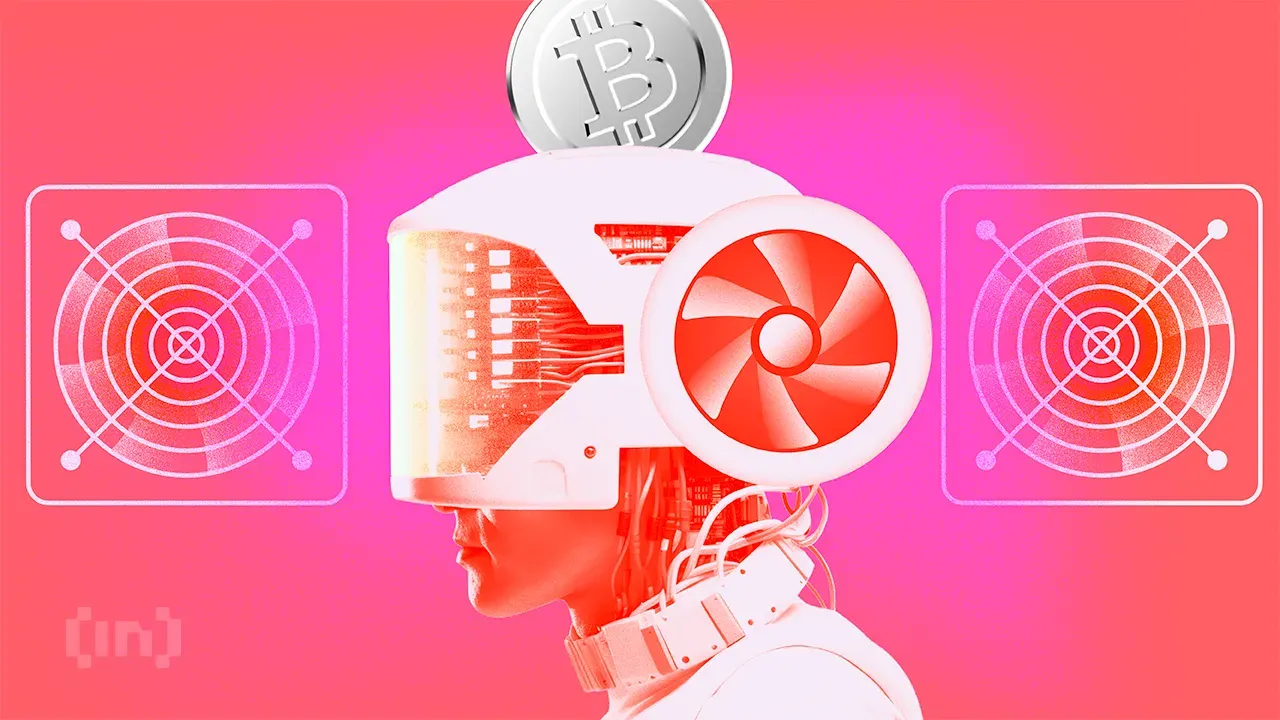
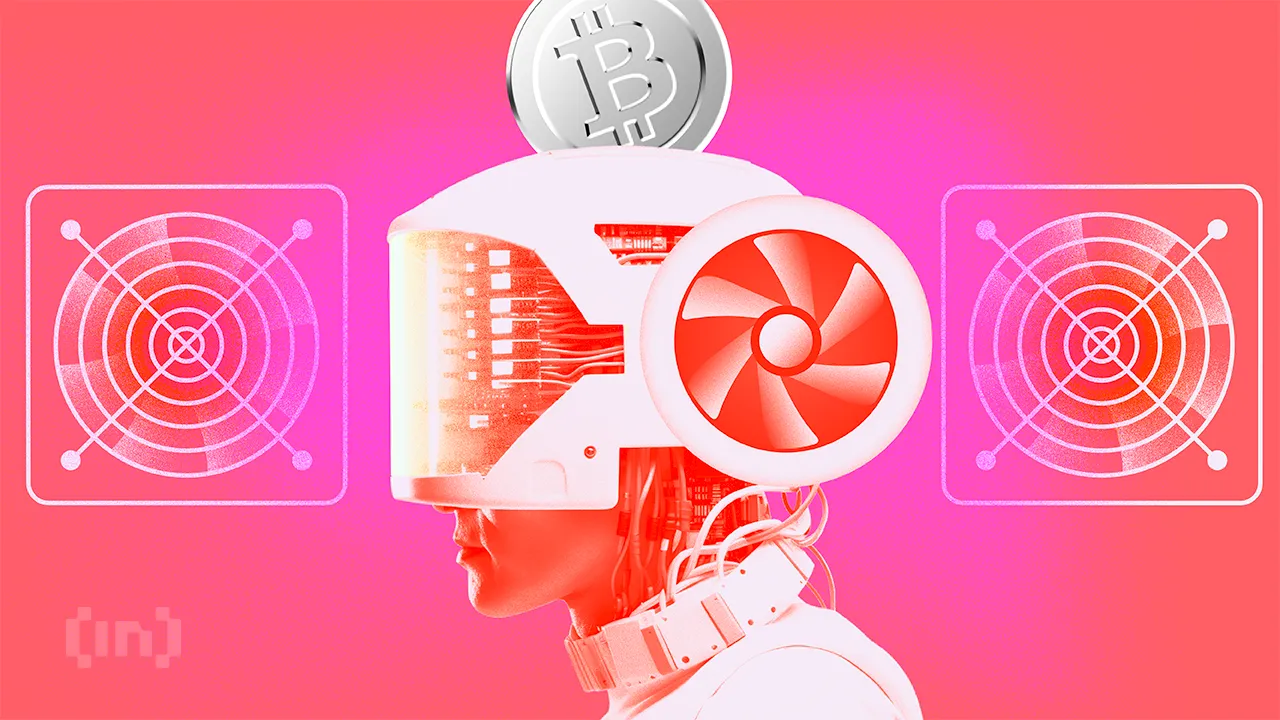
Marathon Digital Holdings, one of the largest Bitcoin mining companies in the US, made headlines with its announcement of a $2 billion stock offering to increase its Bitcoin holdings.
This strategic move, detailed in recent SEC filings, shows Marathon’s aggressive approach to capitalize on the growing crypto market.
Marathon’s $2 Billion Stock Offering: Key Details
On March 30, 2025, Marathon Digital Holdings announced a $2 billion at-the-market (ATM) stock offering to fund its strategy of acquiring more Bitcoin. The company filed a Form 8-K with the SEC, outlining its plan to raise capital through the sale of shares, with the proceeds primarily aimed at increasing its Bitcoin holdings.
According to the SEC filing (Form 424B5), Marathon intends to use the funds for “general corporate purposes,” which include purchasing additional Bitcoin and supporting operational needs.
Marathon holds 46,376 BTC, making it the second-largest publicly traded company in Bitcoin ownership, behind MicroStrategy. The company’s Bitcoin holdings have grown significantly in recent years, from 13,726 BTC in early 2024 to the current figure.
“We believe we are the second largest holder of bitcoin among publicly traded companies. From time to time, we enter into forward or option contracts and/or lend bitcoin to increase yield on our Bitcoin holdings.” Marathon confirmed
This $2 billion stock offering continues Marathon’s strategy to bolster its balance sheet with Bitcoin, a move that aligns with its long-term vision of leveraging cryptocurrency as a store of value.
Marathon’s strategy mirrors that of MicroStrategy. MicroStrategy’s stock price has soared with Bitcoin’s value, providing a blueprint for companies like Marathon to follow. By increasing its Bitcoin holdings, Marathon aims to position itself as a leader in the crypto mining sector while diversifying its revenue streams beyond traditional mining operations.
Marathon Digital CEO Fred Thiel advises investing small amounts in Bitcoin monthly, citing its consistent long-term growth potential.
The issuance of new shares to raise $2 billion could dilute the ownership of existing shareholders, potentially impacting the company’s stock price (MARA). As of March 31, 2025, MARA stock has experienced volatility, trading at around $12.47 per share, down from a 52-week high of $24, according to data from Yahoo Finance.
Moreover, Marathon’s heavy reliance on Bitcoin exposes it to the cryptocurrency’s price fluctuations. If Bitcoin’s price were to decline significantly, the value of Marathon’s holdings would decrease, potentially straining its financial position.
Disclaimer
In adherence to the Trust Project guidelines, BeInCrypto is committed to unbiased, transparent reporting. This news article aims to provide accurate, timely information. However, readers are advised to verify facts independently and consult with a professional before making any decisions based on this content. Please note that our Terms and Conditions, Privacy Policy, and Disclaimers have been updated.
-

 Altcoin24 hours ago
Altcoin24 hours agoCardano Price Eyes Massive Pump In May Following Cyclical Patern From 2024
-

 Market20 hours ago
Market20 hours agoBitcoin Bears Tighten Grip—Where’s the Next Support?
-

 Market19 hours ago
Market19 hours agoEthereum Price Weakens—Can Bulls Prevent a Major Breakdown?
-

 Market18 hours ago
Market18 hours agoXRP Price Fate Hangs on $2.00—Major Move Incoming?
-

 Ethereum10 hours ago
Ethereum10 hours agoEthereum To $20K? Investor Says Real-World Adoption Is The Key
-

 Market17 hours ago
Market17 hours agoDogecoin (DOGE) Bulls In Trouble—Can They Prevent a Drop Below $0.15?
-

 Bitcoin10 hours ago
Bitcoin10 hours agoBTC Price Rebound Likely as Long-Term Holders Reenter Market
-

 Market16 hours ago
Market16 hours agoBitcoin Price Nears $80,000; Fuels Death Cross Potential




